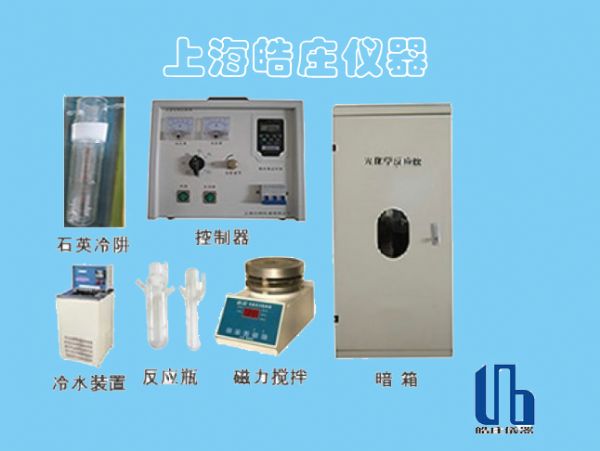Shanghai Xinzhuang Instrument Photochemical Reactor, also known as photochemical reactor, multifunctional photochemical reactor, photocatalytic reactor, OCRS-K multi-function photochemical reactor and other OCRS multi-series photocatalytic devices are Kaifeng Hongxing Science and Education Instrument Factory A new generation of photochemical reaction devices based on the cooperation of foreign imported photochemical reactors and domestic famous laboratory practice, mainly used to study gas phase, liquid phase solid phase, flow system in simulated ultraviolet light, simulated visible light, special simulated light irradiation. Next, whether or not the photochemical reaction under the conditions of TiO2 photocatalyst is supported.
Features:
1. The electrical control part of the product is separated from the protection reaction black box. The assembly, maintenance and upgrade are convenient and reasonable, and the whole machine is beautiful!
2, the model of the main control power controller lighting time display flexible control, suitable for timekeeping and data comparison experiments!
3, professional and stable analog light source and stable, space-saving volume design, especially suitable for laboratory equipment with limited space!
4, supporting multi-tube magnetic stirrer reactor function, to make up for the irrational rotation of multiple test tubes around the light source and the poor mechanical performance of multiple test tube rotation, can achieve simultaneous, partial test tube inflation function, multi-tube magnetic stirrer reactor actual Practical value and excellent performance!
5, supporting multi-port magnetic stirring reaction vessel function, can make the reaction process with strong magnetic stirring, aeration, deflation, sealing, temperature measurement and other functions!
6. It is equipped with a solid reaction device, which can perform photocatalytic reaction on solid materials, and high-efficiency concentrating device to increase catalytic speed!
7. This type of photochemical reaction instrument adds a non-experimental automatic shading device, which will block the light source with unstable initial light flashing and phase sampling, which will improve the experimental precision.
8. There is a water shortage alarm device. When the water supply of the cooling water supply is insufficient or the water leakage seriously affects the safety of the test, an alarm sounds to remind the operator to check the water supply condition in time.
9. It is equipped with a cooling water supply device, and the imported compressor has no fluorine operation, ensuring stable operation of the light source for a long time, and is suitable for continuous operation experiments. The low-temperature cooling water supply device itself is equipped with a silent external circulation pump to provide cooling water circulation supercharging while saving waste of water source.
10. The cooling water supply device adopts touch button control, the interface is generous, no traditional panel instrument has a dull sense of appearance, waterproof and high temperature resistance, and can add USB computer interface and operation software driver according to customer requirements, and the digital operation is superior!
11. Flexible and diversified product design, we can formulate product design plans according to customer requirements, and promote the technology-oriented concept of people!
1. Initiating a reaction to produce an excited state molecule (A*) A (molecular) + hv → A*
2, A* dissociation produces new substances (C1, C2...) A*→C1+C2+...
3. A* reacts with other molecules (B) to produce new substances (D1, D2...) A*+B→D1+D2+...
4. A* loses energy and returns to the ground state and emits light (fluorescence or phosphorescence) A*→A+hv
5. A* collides with other chemically inert molecules (M) and loses activity A*+M→A+M'
Reaction 1 is a reaction that initiates a reaction in which a molecule or atom absorbs photons to form an excited state A*. The photon energy absorbed by the initiation reaction 1 needs to be adapted to the energy of the electron energy level of the molecule or atom. The electronic energy level difference of the material molecules is large, and only the high energy part of the far ultraviolet light, the ultraviolet light and the visible light can excite the valence electrons to a high energy state. That is, the wavelength is less than 700 nm, which may cause photochemical reactions. The excited state molecules produced are highly active and may produce a series of complex reactions of 2 to 4 above. Reactions 2 and 3 are two chemical reaction forms caused by excited molecules. Among them, reaction 2 is the most important one in the photochemical reaction in the atmosphere. The excitation molecules dissociate into two or more molecules, atoms or radicals, making the atmosphere Contaminants have been converted or migrated. Reactions 4 and 5 are two forms in which the excited state molecules lose energy, and the result is back to the original state.
N2, O2 and O3 in the atmosphere can selectively absorb high-energy photons (short-wave radiation) in solar radiation and cause molecular dissociation: N2+hv→N+N λ<120 nm, O2+hv→O+O λ<240 Nm, O3+hv→O2+O λ=220~290 nm. Obviously, photons with a high energy part of the solar radiation with a wavelength of less than 290 nm cannot be reached by the absorption of O2, O3, N2. Long-wave radiation (infrared portion) greater than 800 nm is almost completely absorbed by water vapor and CO2 in the atmosphere. Therefore, only visible light with a wavelength of 300 to 800 nm is not absorbed and passes through the atmosphere to the ground. Atmospheric low-level pollutants NO2, SO2, alkyl nitrous acid (RONO), aldehydes, ketones and alkyl peroxides (ROOR') can also undergo photochemical reactions: NO2+bv→NO·+O HNO2(HONO)+ Hv→NO+HO· RONO+hv→NO·+RO· CH2O+hv→H·+HCO ROOR′+hv→RO·+R′O·

EVA face Mask
EVA face mask
Shenzhen Guohui Craft Products Co.,Ltd. , https://www.evacarrycase.com